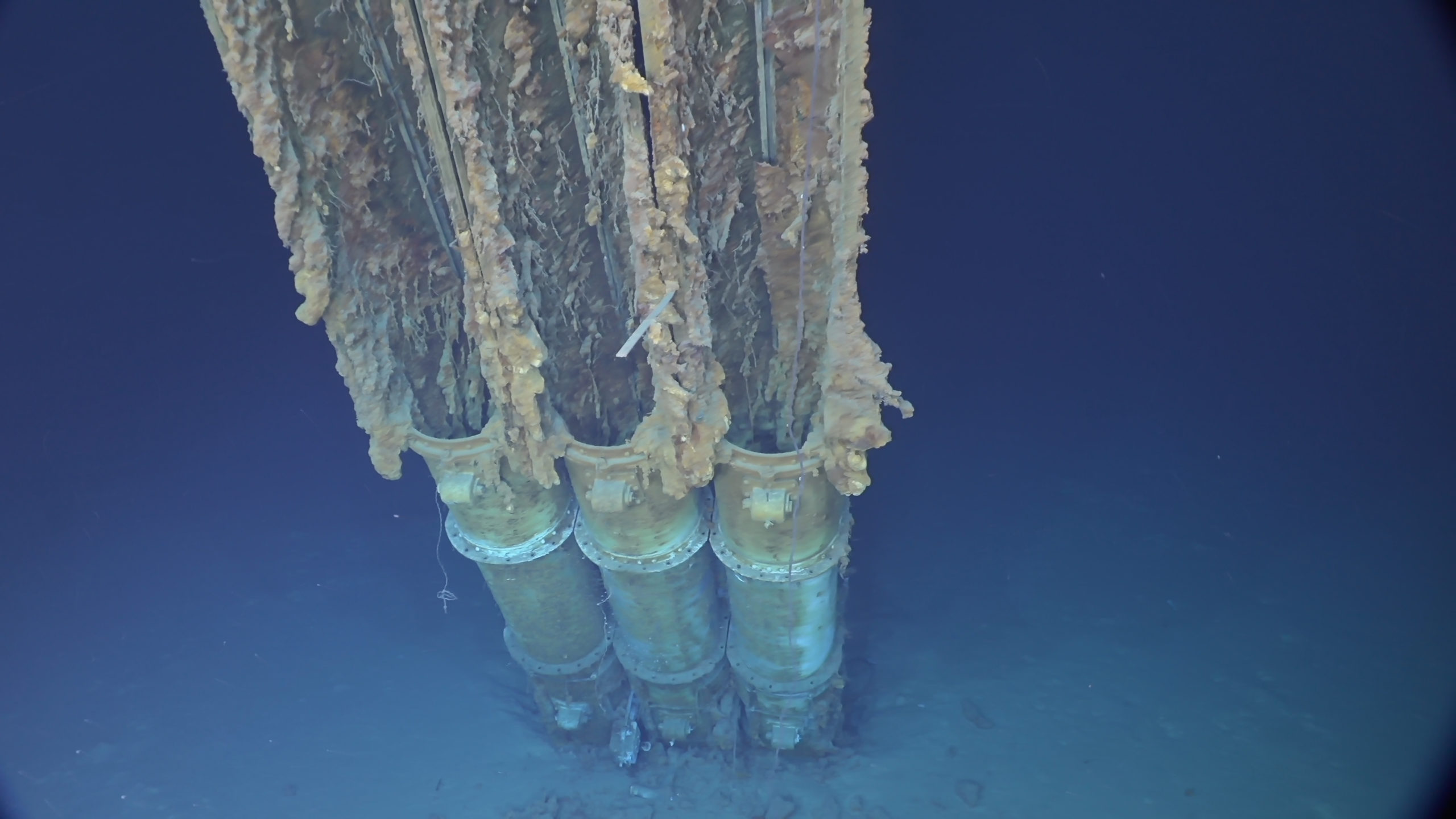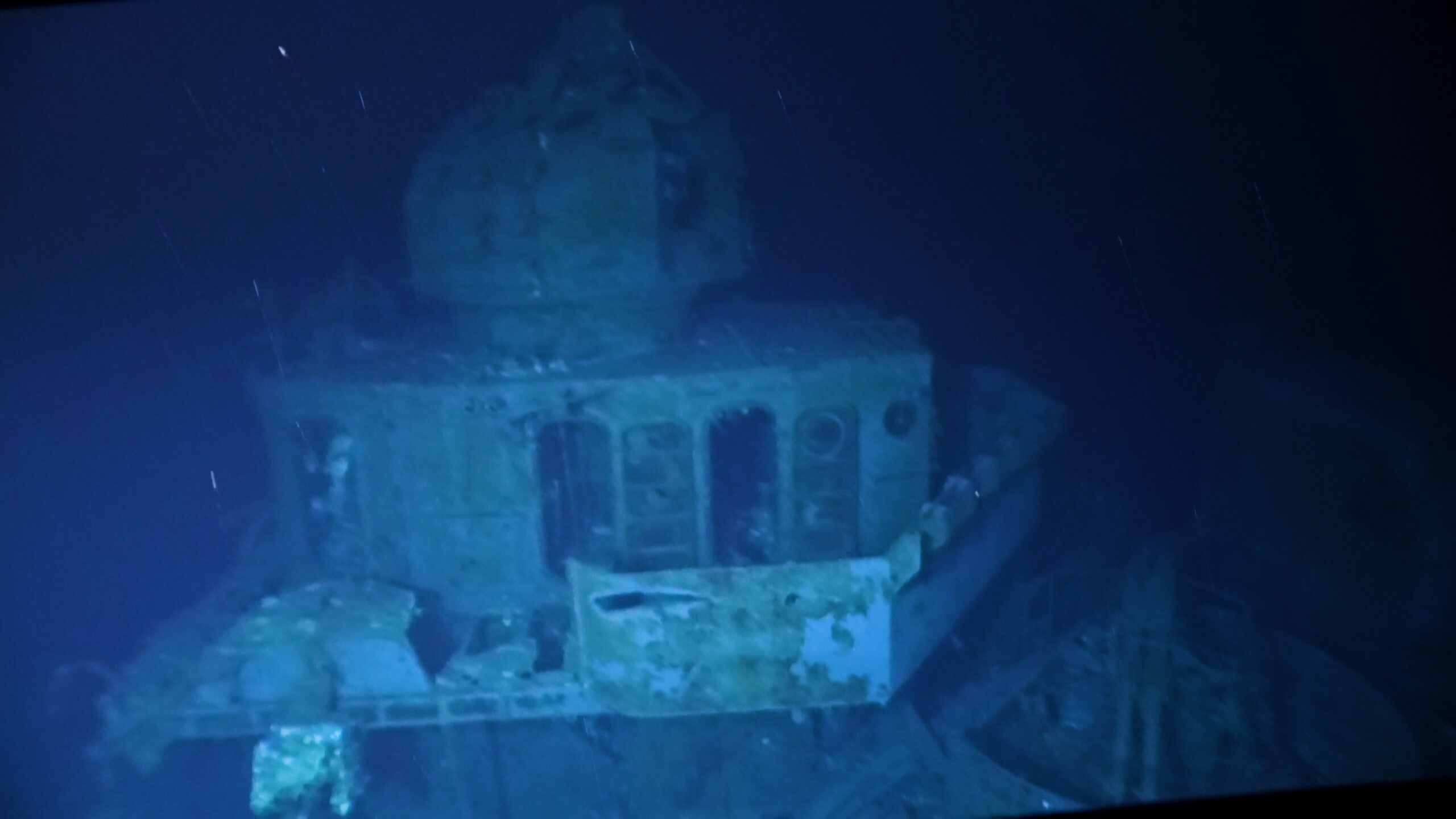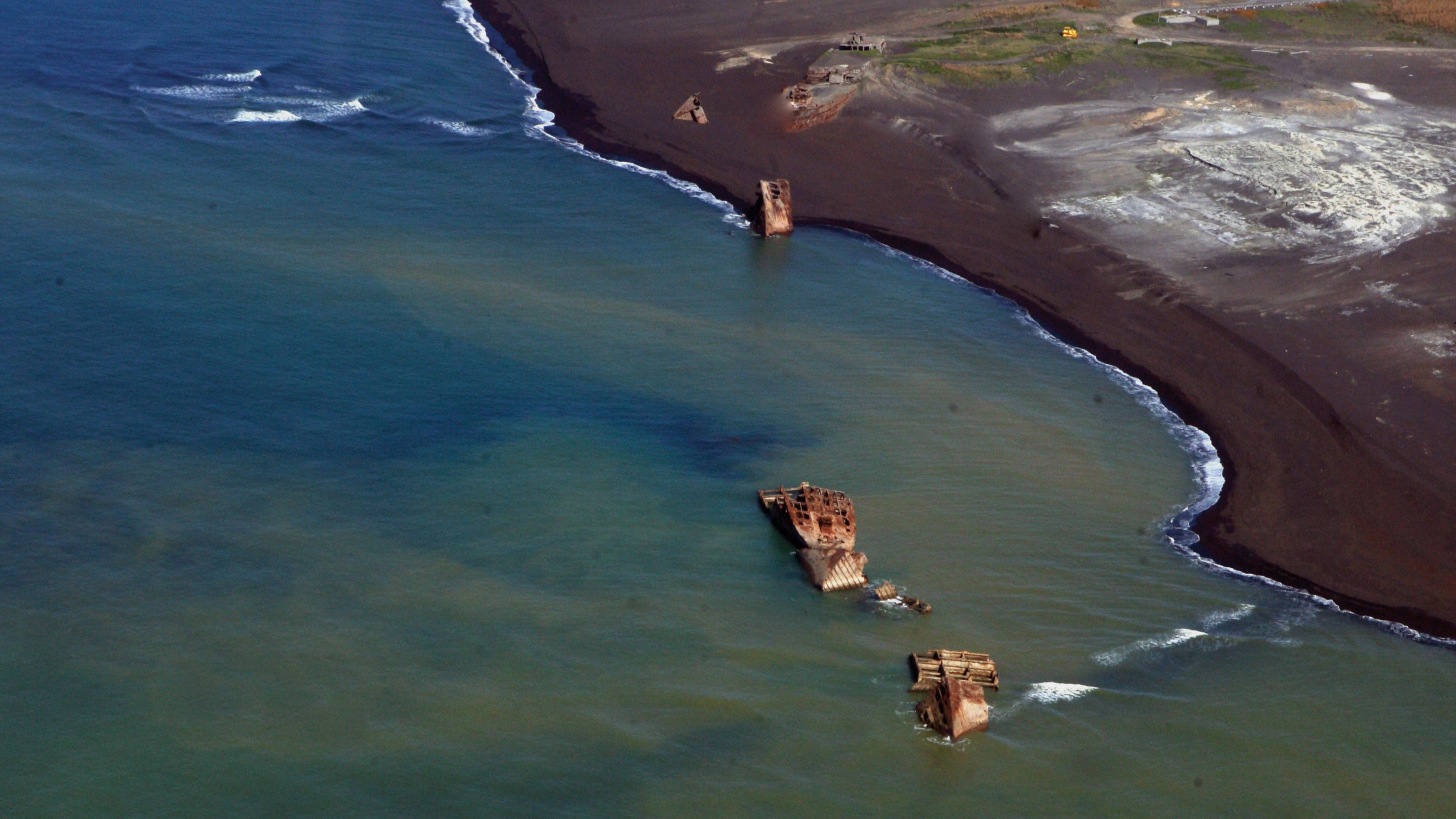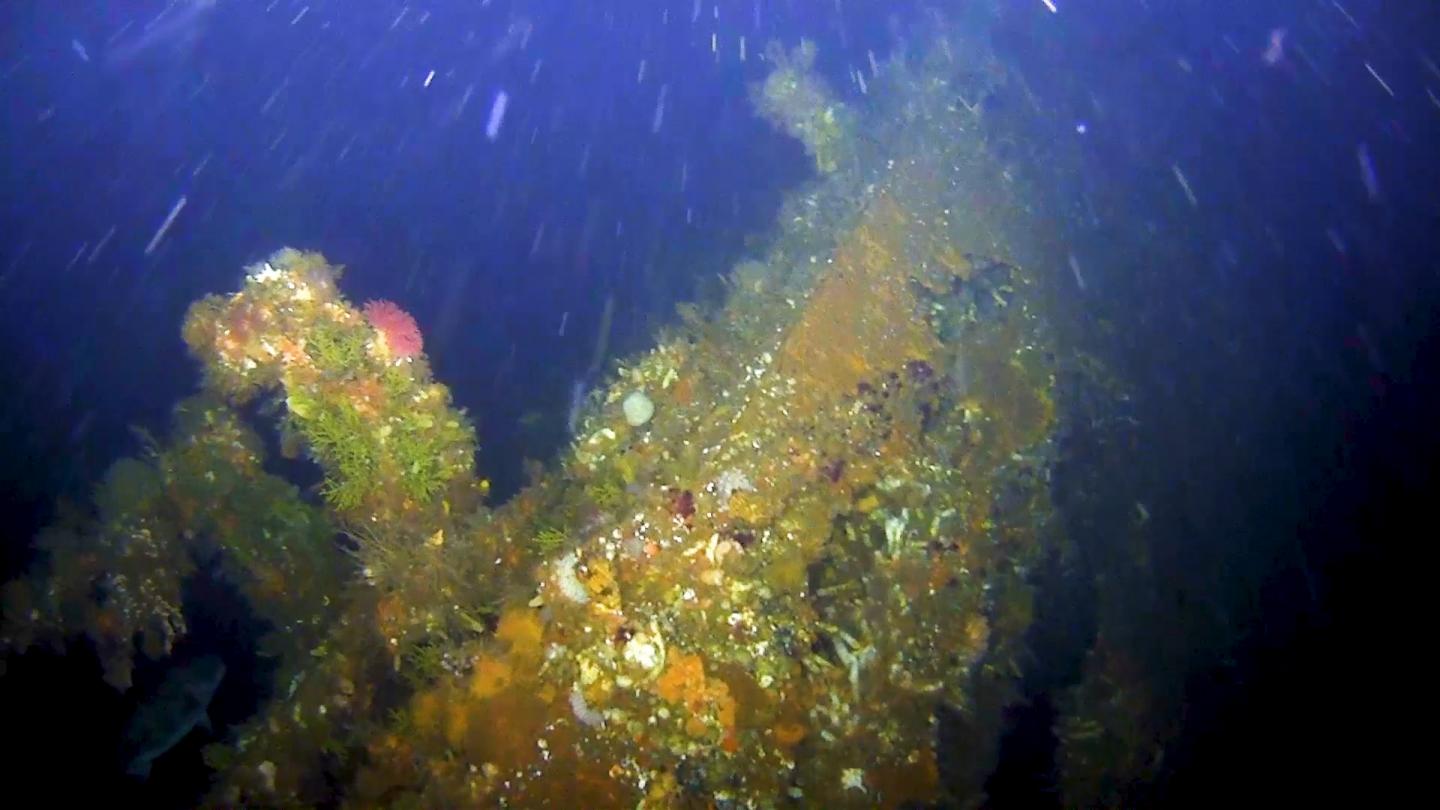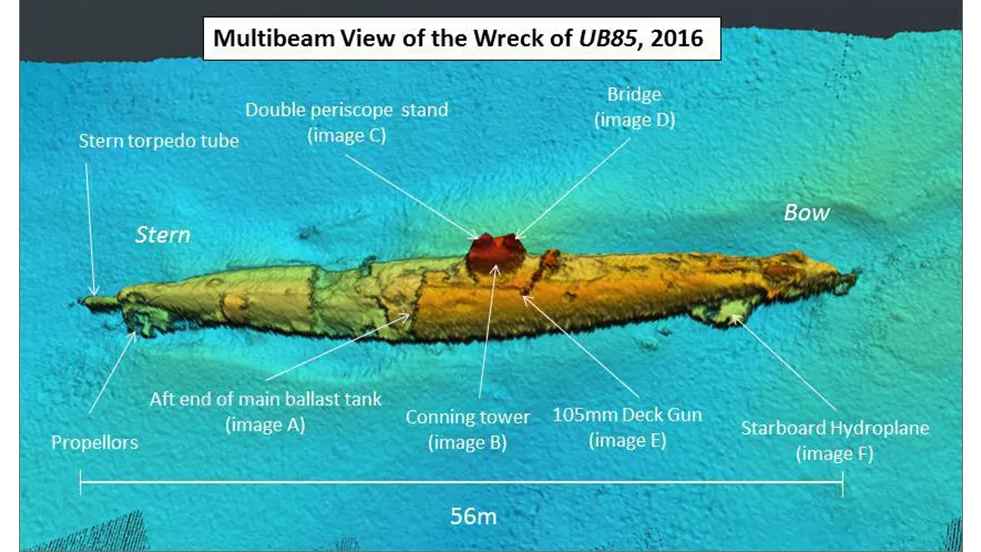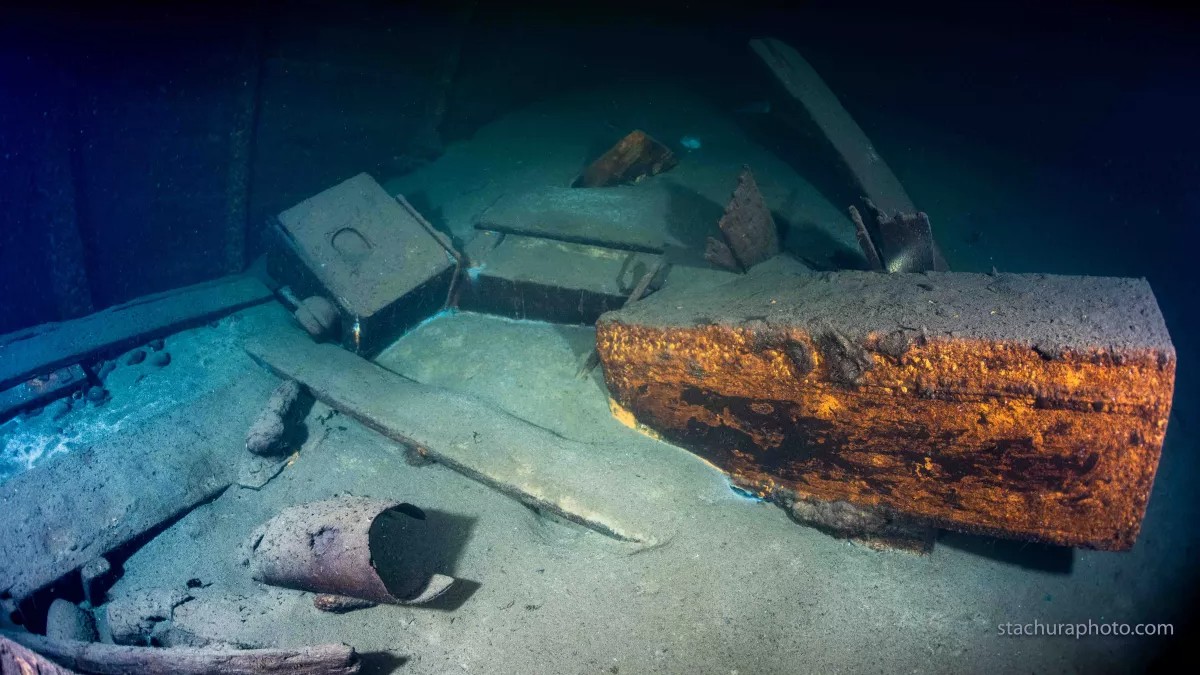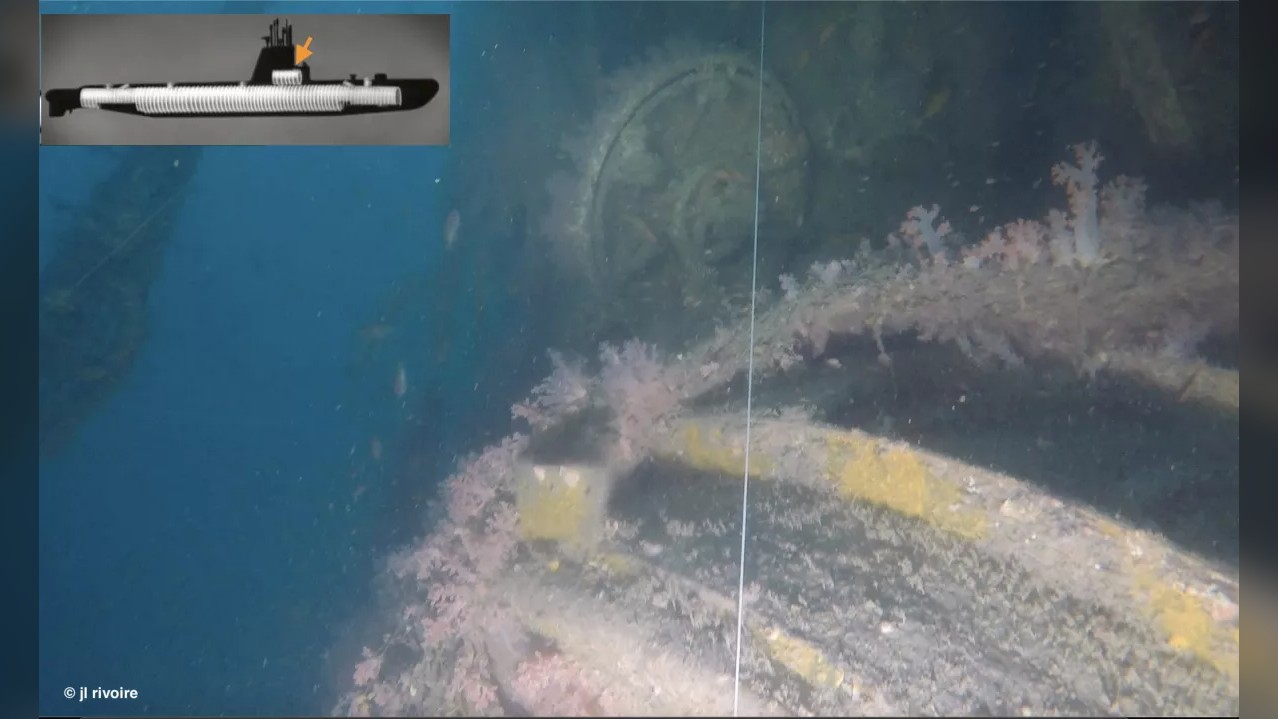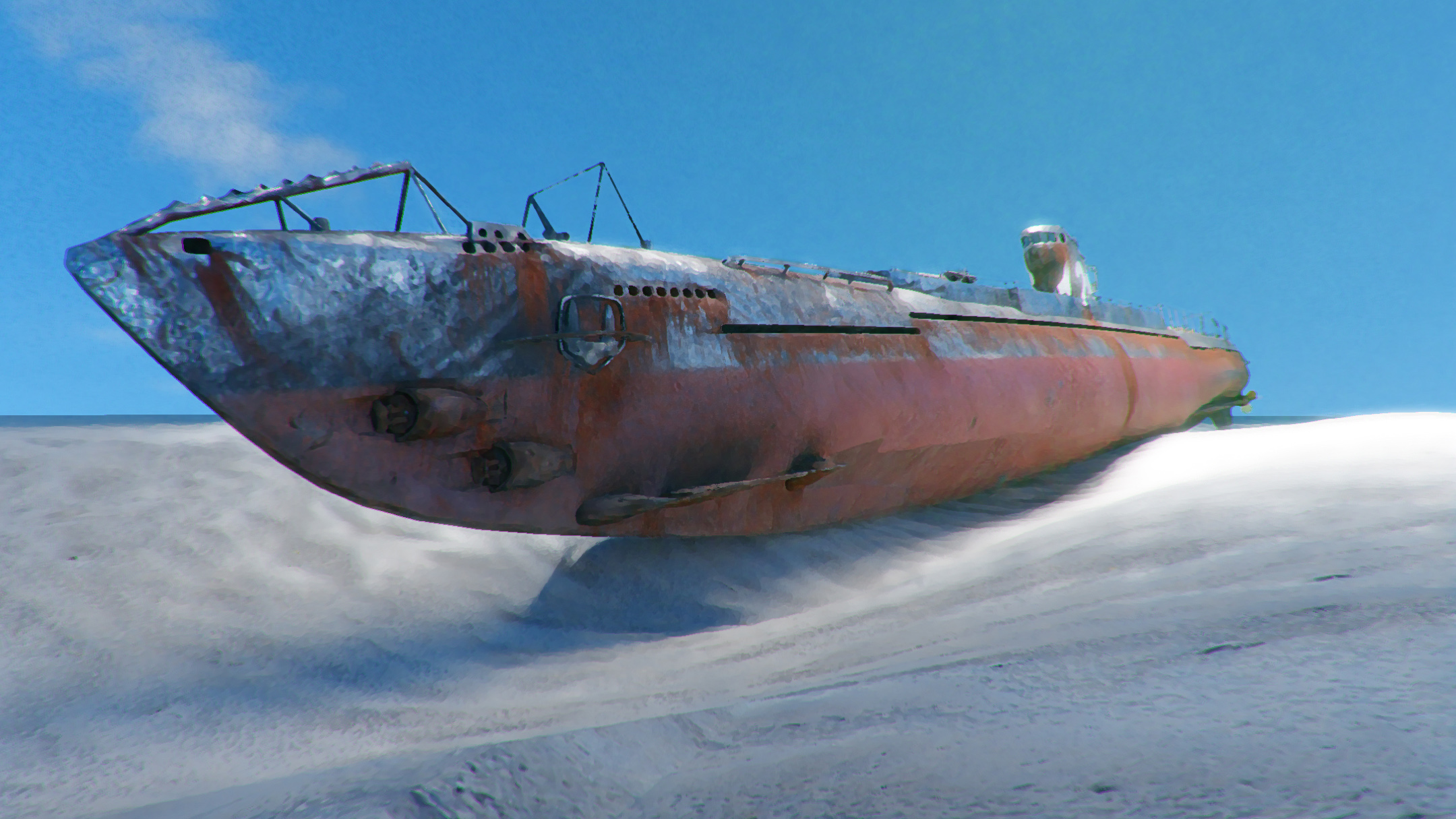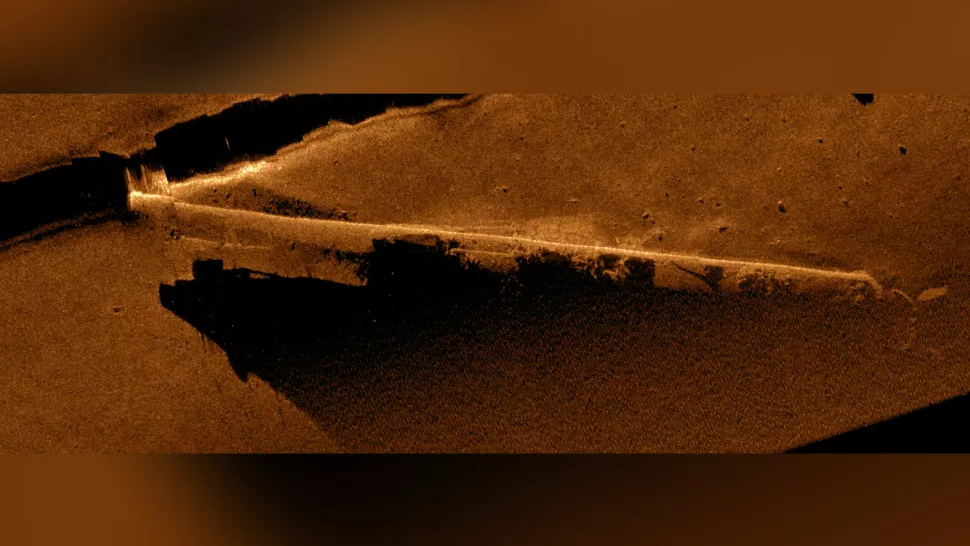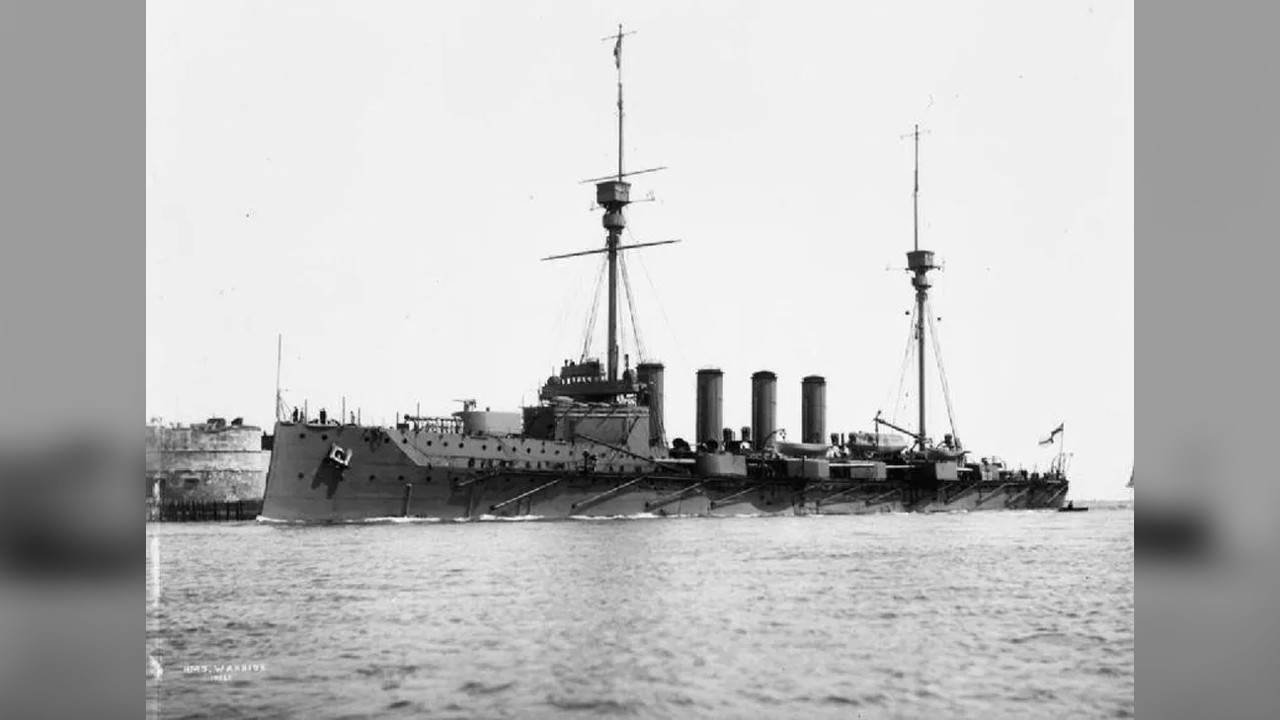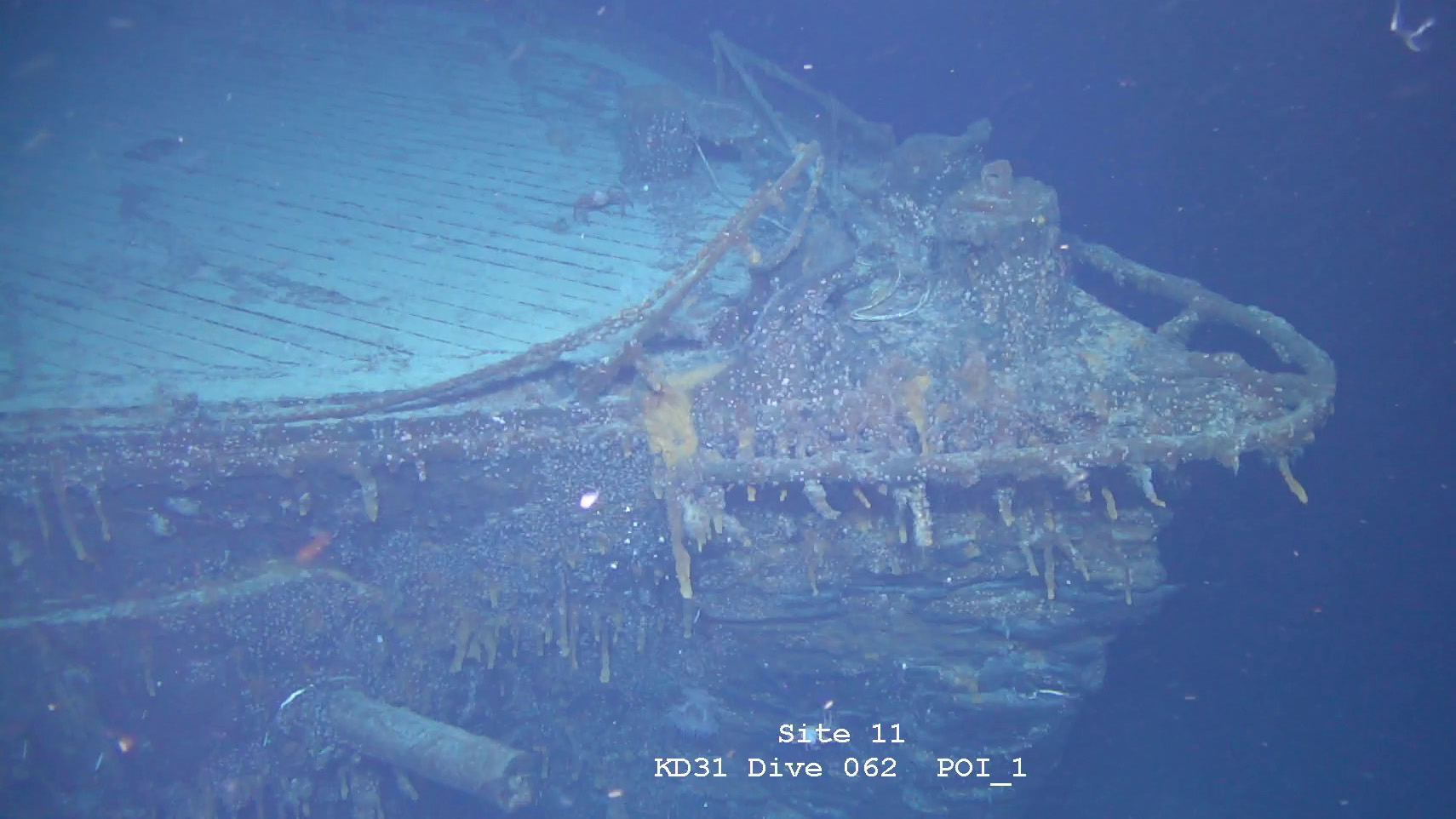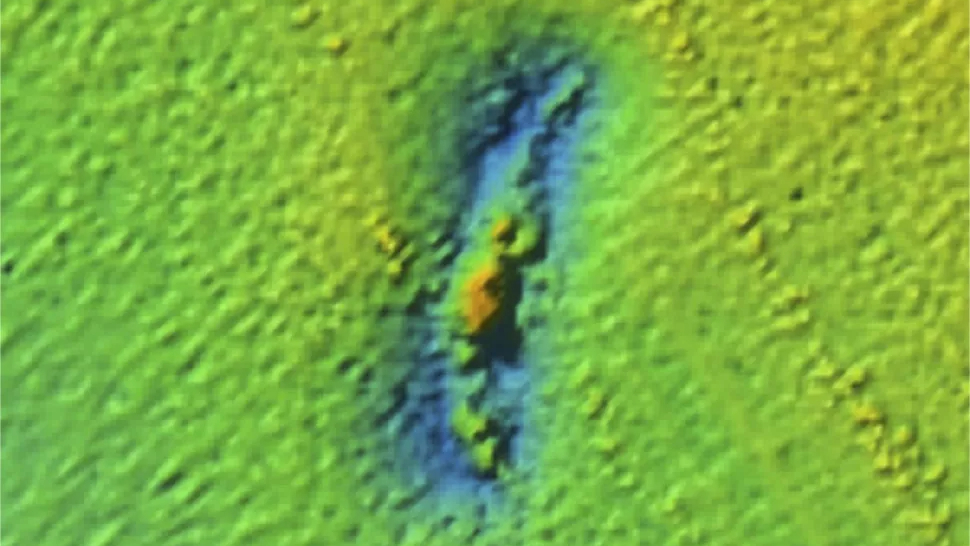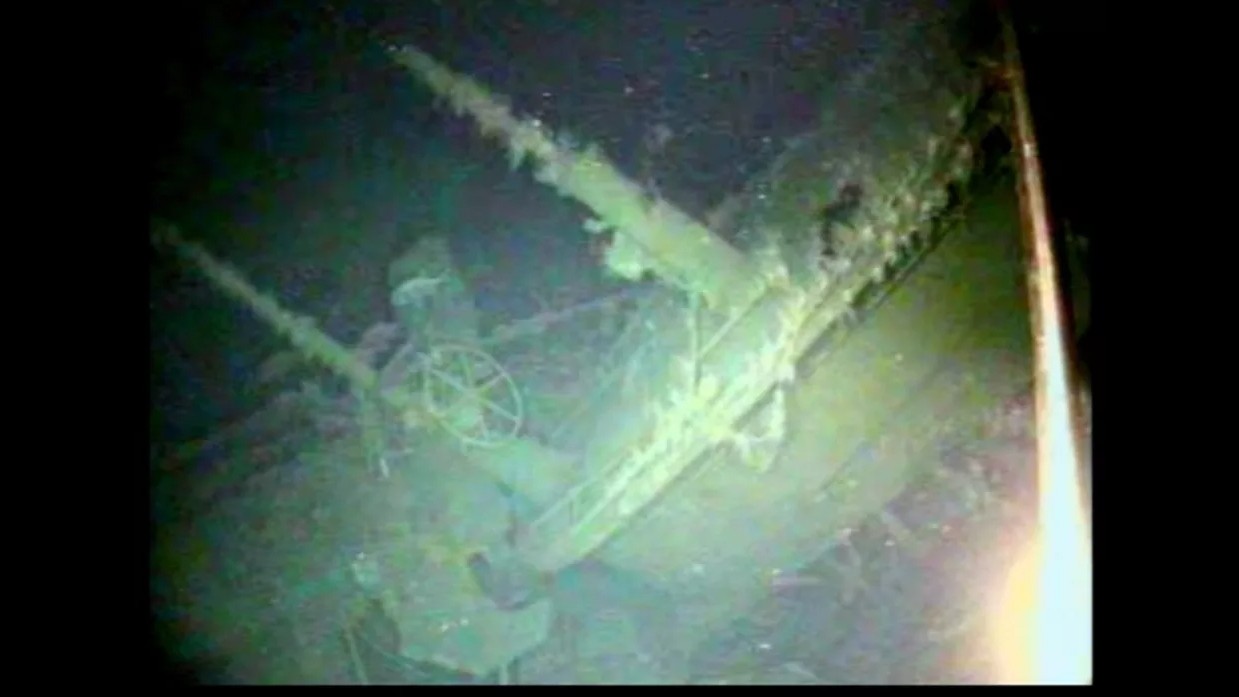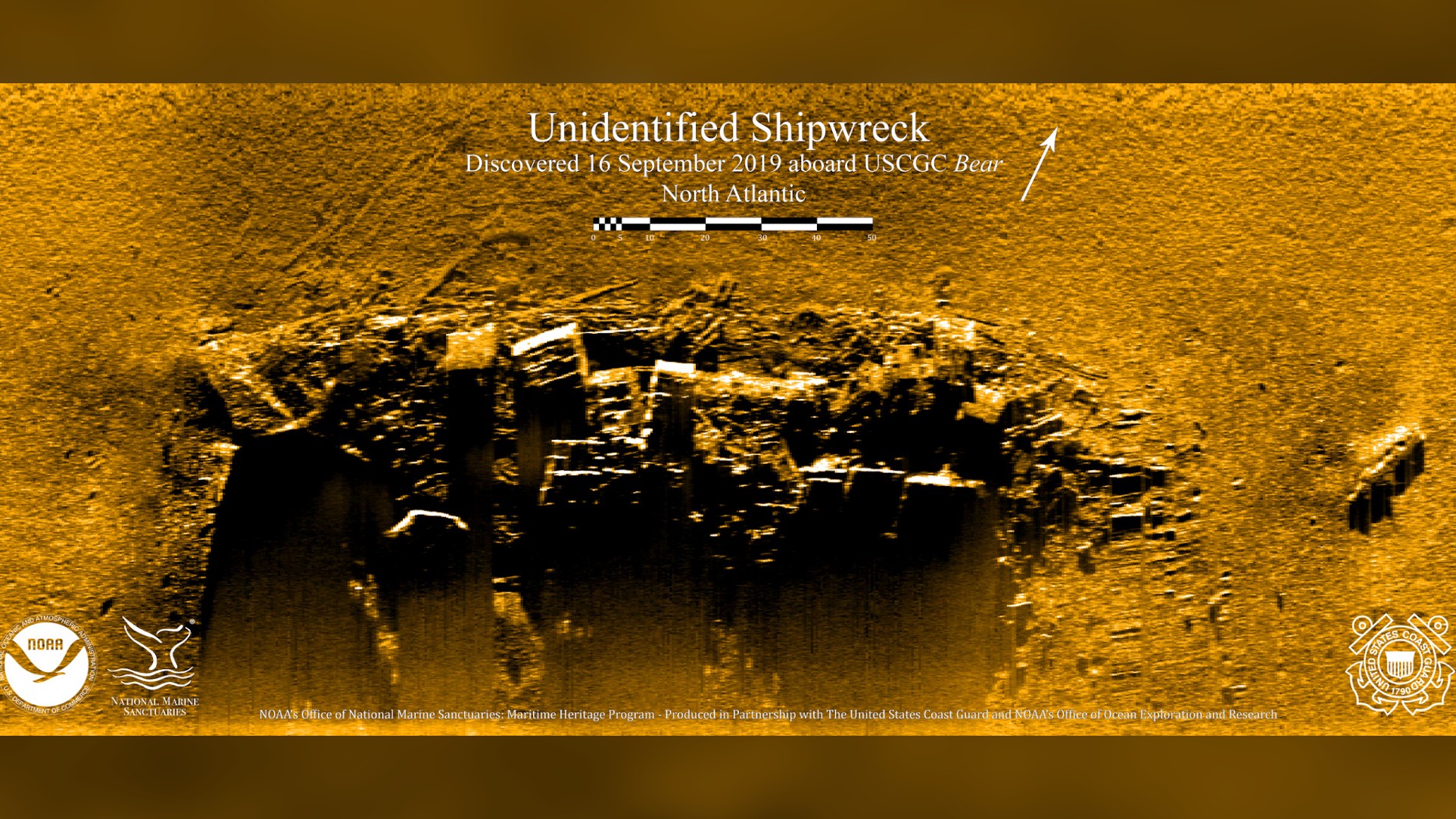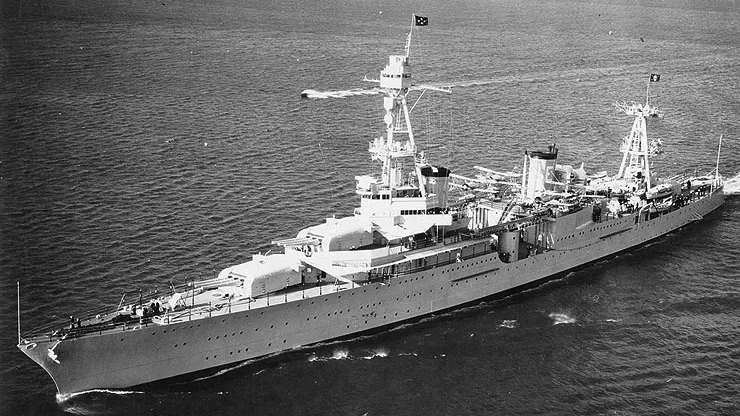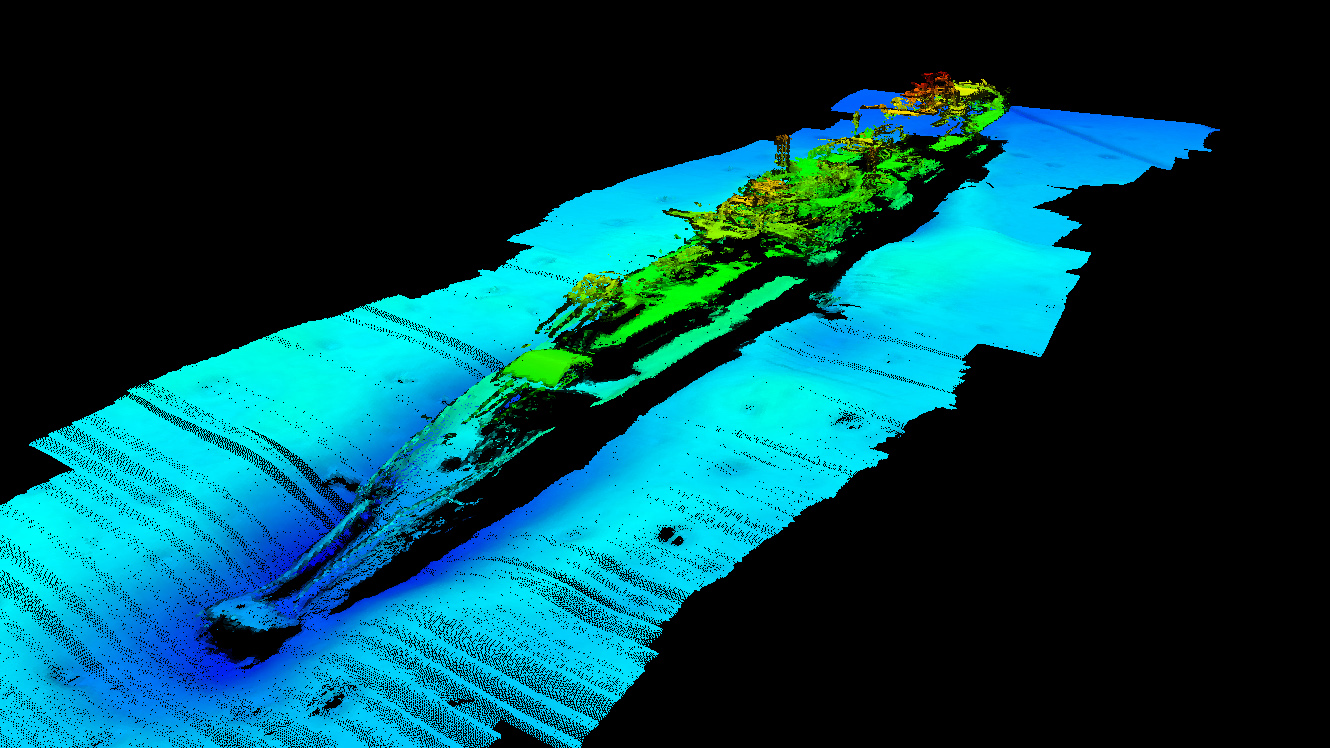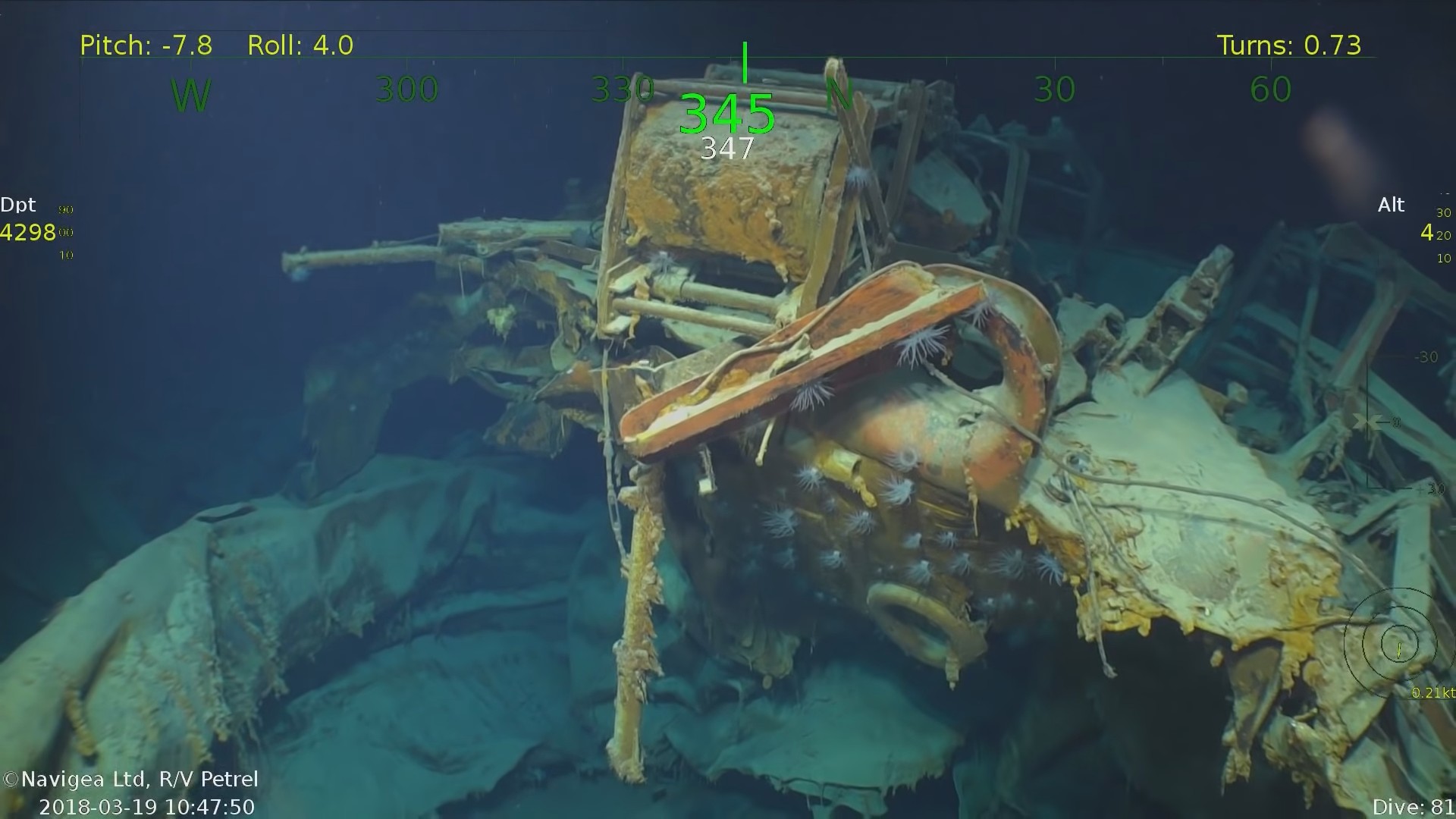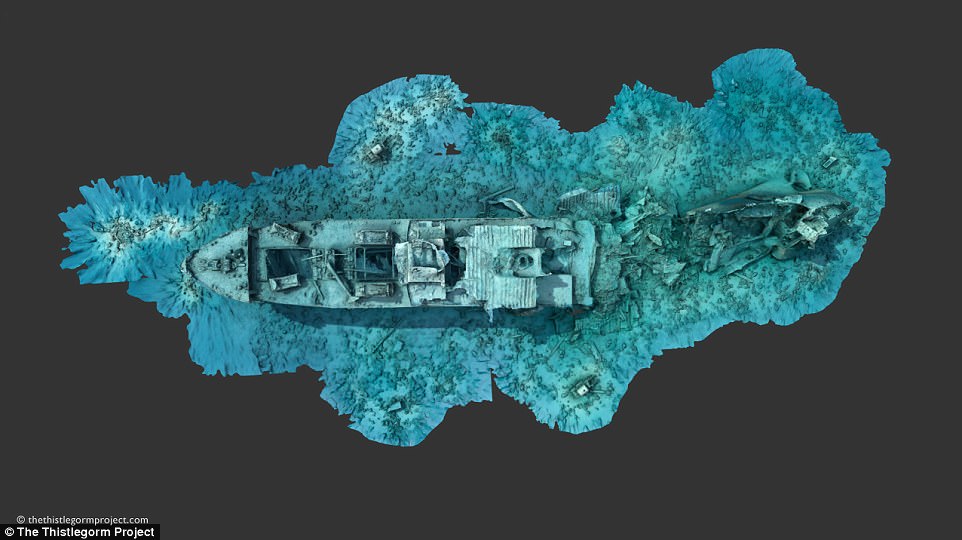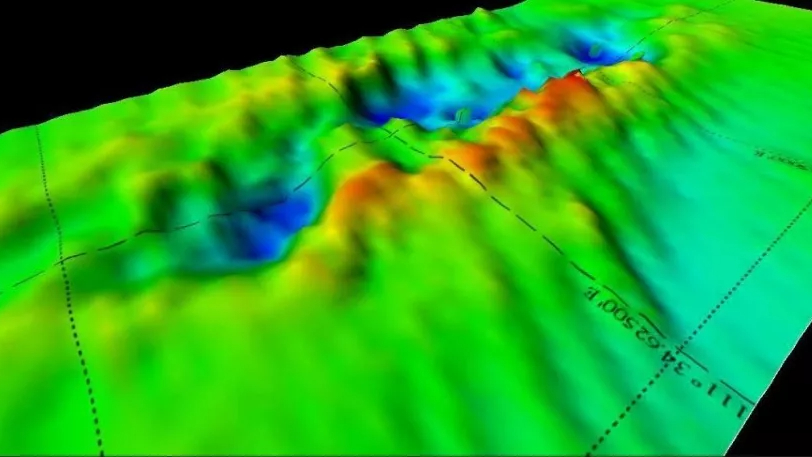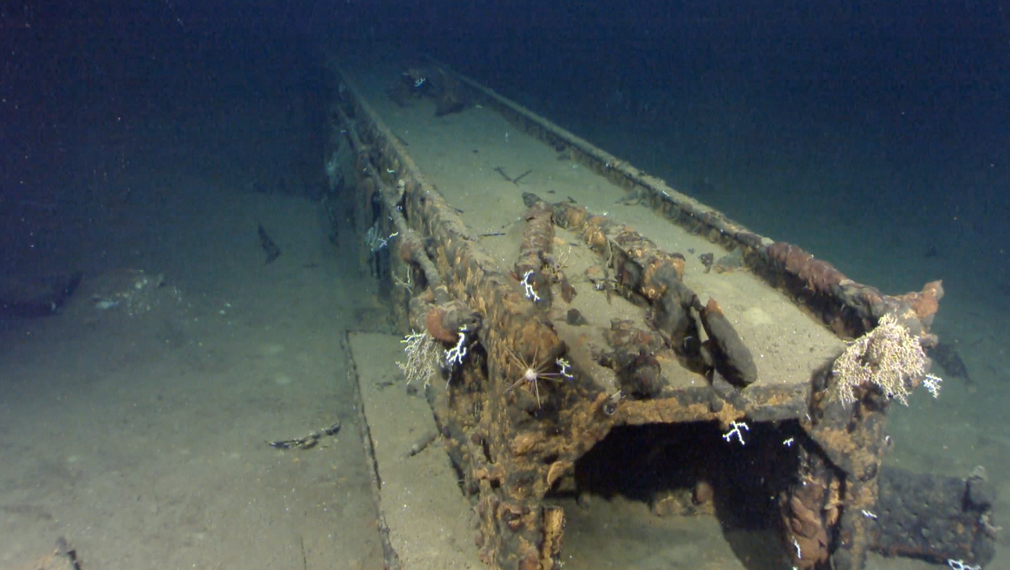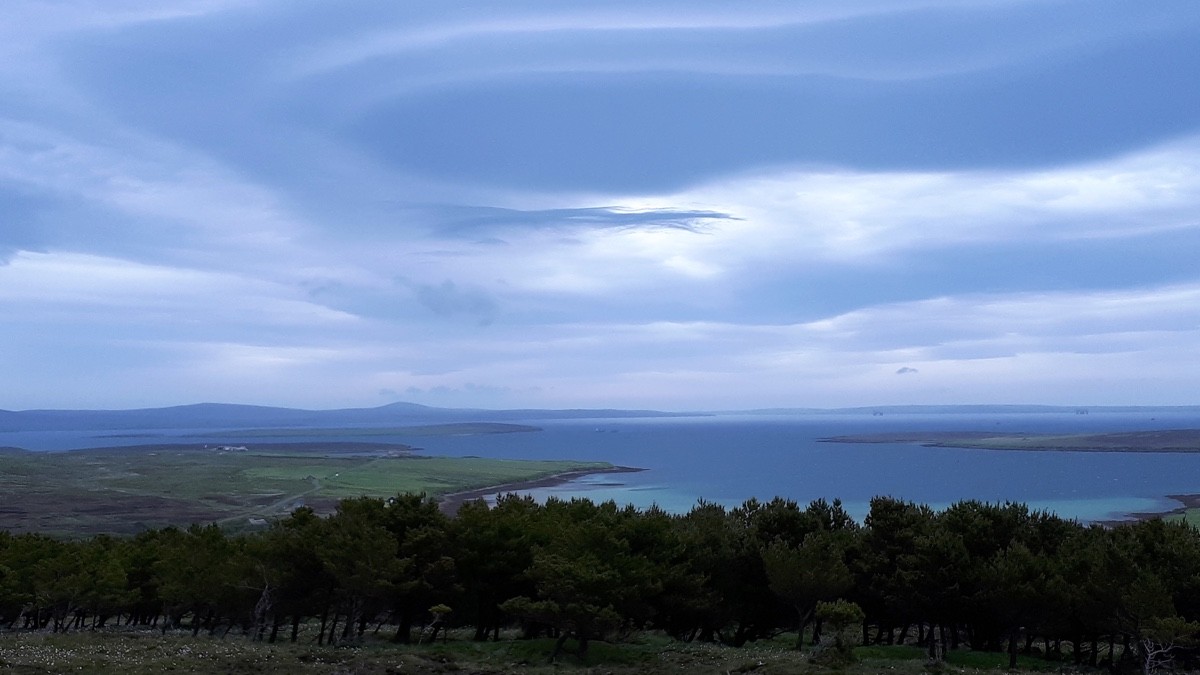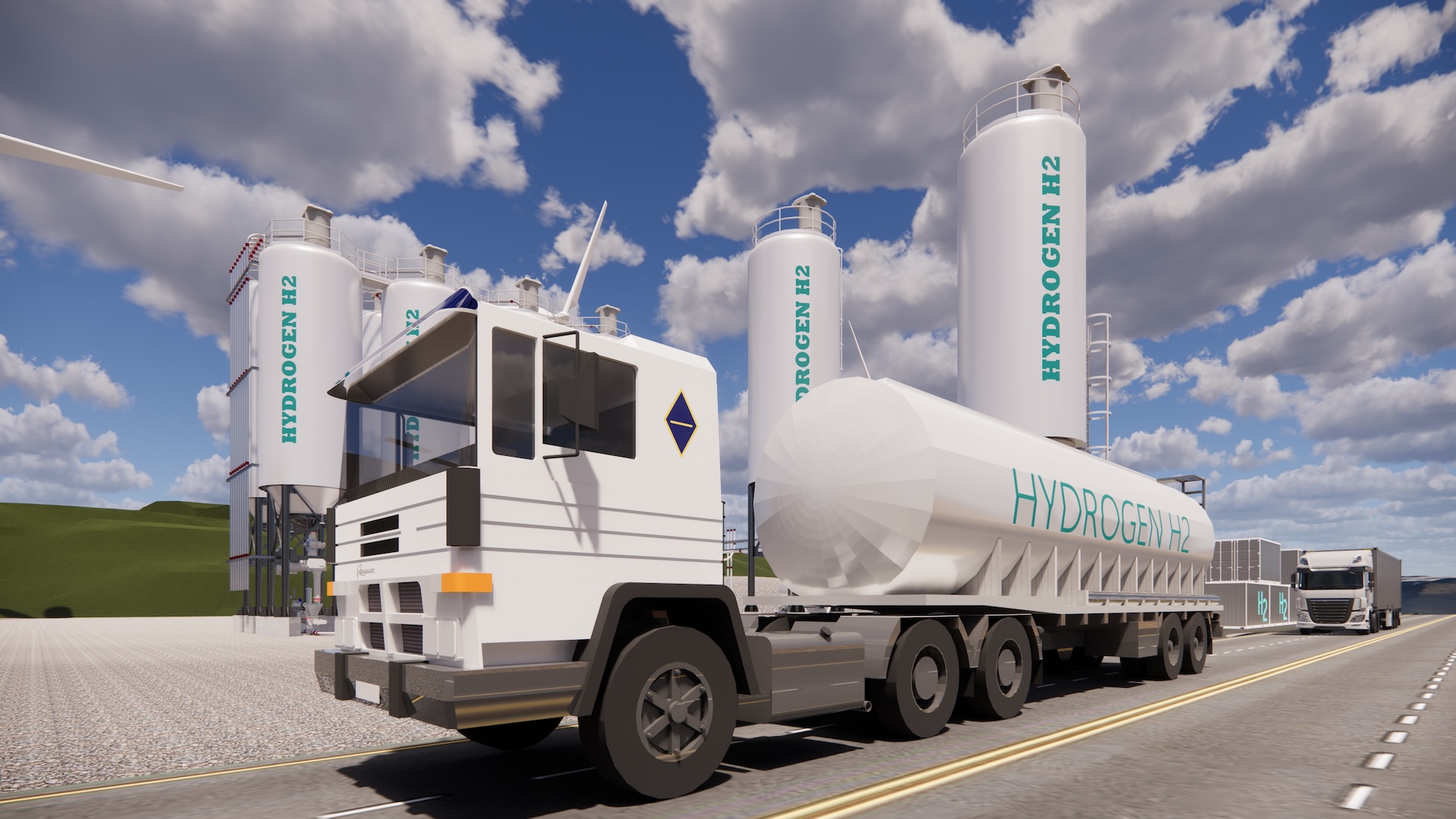30 incredible sunken wrecks from WWI and WWII
A look at some of the most notable underwater wrecks from WWI and WWII.
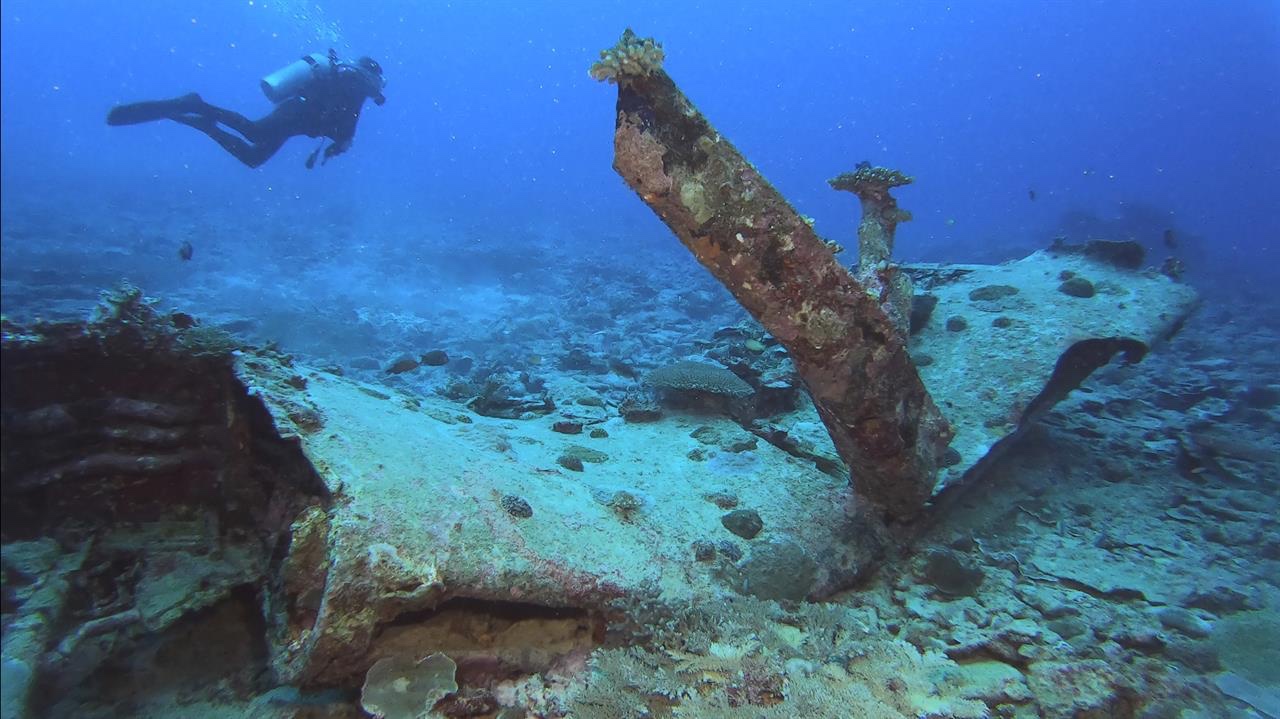
World War I (1914 to 1918) and World War II (1939 to 1945) saw some of the biggest naval battles and operations in history, and shipwrecks from this era are scattered across the world's oceans — around 15,000 ships, and over 500,000 people, were sunk during World War II alone, according to some estimates. Voyages by sea were the main means of travel at the time of the world wars, and control of the oceans was a primary goal in both conflicts.
Almost 80 years after the end of World War II, the wrecks of thousands of ships from World War I and World War II still lie on the seafloor, each with a unique — and often tragic — story behind it.
Here, we take a look at some of the most notable underwater wrecks from World War I and World War II.
1. Wreck from the Battle of Midway
The Japanese aircraft carrier Kaga is only the second wreck discovered from the Battle of Midway, the June 1942 clash against a Japanese attack that was decisively won by the U.S; the other is the wreck of the American aircraft carrier USS Yorktown. Bombs from U.S. warplanes tore apart the Kaga and set it on fire, and other Japanese warships eventually scuttled the carrier using torpedoes.
2. Dutch submarines near Malaysia
Two Dutch submarines that sank in Southeast Asia during World War II now seem to have disappeared, probably at the hands of illegal salvagers. One of the subs, HNLMS O 16, was sunk by a naval mine in the Gulf of Thailand in December 1941. The other, HNLMS K XVII, was sunk by bombs from Japanese warplanes in February 1942.
3. Sammy B in the Philippine Sea
The American destroyer USS Samuel B. Roberts, nicknamed the "Sammy B," was discovered in the Philippine Sea in 2022 at a depth of 22,916 feet (6,985 meters), making it the deepest known shipwreck in the world. It sank in October 1944 during the Battle of Leyte Gulf, one of the largest naval battles in history, after the ship was hit by shells from Japanese warships.
4. USS Johnston found deep underwater
Until the Sammy B was located, the world's deepest known shipwreck was that of the USS Johnston, a destroyer that was also sunk during the Battle of Leyte Gulf. The wreck lies 21,180 feet (6,456 m) below the ocean surface off the island of Samar in the Philippines, where it sank after an intense battle with Japanese warships.
Get the world’s most fascinating discoveries delivered straight to your inbox.
5. Amphibious vehicles and warplanes
Several World War II wrecks lie on the seafloor near the Hawaiian island of Maui. They include amphibious assault vehicles used to train U.S. troops for major invasions of Pacific islands, as well as the wrecks of a number of warplanes, among them an F6F Hellcat fighter and an SB2C Helldiver bomber.
6. Discovered off North Carolina
Two World War II vessels that sank in July 1945 within minutes of each other and just a few hundred yards apart were discovered off North Carolina in 2014. The Allied merchant freighter Bluefields was part of a convoy when it was sunk by a torpedo from a German U-boat, and the U-boat itself, U-576, was sunk a few minutes later by the convoy's escort ships.
7. 'Ghost ships' rise again
The eruption of an underwater volcano near Tokyo in 2022 raised around two dozen "ghost ships" from the seabed near the Japanese island of Iwo Jima. The island was the scene of fierce fighting during the Battle of Iwo Jima in 1945; the "ghost ships" are mainly Japanese transport vessels scuttled after the battle by the victorious U.S. Navy.
8. American destroyer sunk by explosion
The wreck of the American destroyer USS Abner Read was discovered in 2014 near the island of Kiska, part of Alaska's Aleutian Islands and one of only two areas of U.S. territory briefly occupied by the Japanese during World War II. The ship was on patrol in August 1943 when it was sunk by a large explosion, probably from a Japanese naval mine.
9. Sea monster attack?
A World War I German U-boat supposedly attacked by a sea monster was discovered on the seafloor between Scotland and Ireland in 2016. According to British war records, the UB-82 was sunk by British patrol boats in April 1918. But an internet legend relates that the submarine's captain reported that the vessel was first attacked by a sea monster, which damaged it and prevented it from diving.
10. Sunken treasure
The wreck of a German steamship that was sunk in the Baltic Sea near the end of World War II may hold the precious panels from Russia's 18th-century Amber Room. The ornate room was built in a royal castle near St. Petersburg, but it was captured and stripped by the invading Germans in 1941. Researchers believe that the steamship may have been carrying the Amber Room panels and other fittings away from the city of Königsberg when it was sunk by Soviet warplanes in April 1945.
11. Shot-down warplane
In 2020, wreck divers confirmed the identity of the pilot of a warplane that was shot down in 1945 near the remote Japanese island of Iriomote. U.S. Marine 2nd Lt. John McGrath piloted the aircraft, an F4U-4 Corsair, during an attack on the island in the last stages of World War II. A member of McGrath's family dived to the wreck as part of the research.
12. Sunk American submarine
An American submarine, the USS Grenadier, that sank in 1943 was discovered by divers at the north end of the Strait of Malacca, between the Malay Peninsula and Sumatra, in 2020. It was sunk by a torpedo dropped from a Japanese warplane as the submarine attempted to attack two Japanese cargo ships near the Thai island of Phuket.
13. Polluting German warship
A German warship that sank in 1942 is still polluting the North Sea with toxic chemicals from its fuel and ammunition, according to a 2022 study. The patrol boat was sunk as it took part in Operation Cerberus, when it was part of a convoy escorting the cruiser Prinz Eugen and the battleships Scharnhorst and Gneisenau through the English Channel.
14. Sub sunk and then bombed
A Japanese submarine that was sunk in World War II and then bombed by a salvager 30 years later is now the subject of a virtual-reality study. The sub was sunk with depth charges from Australian warships off the coast of Darwin in 1942, and in 1977, it was damaged by explosives from a salvager who was attempting to force a deal for its recovery with Japan's government.
15. Sub on a secret mission?
The wreck of the British submarine HMS Urge was discovered in 2019 near the Mediterranean island of Malta. The sub disappeared in 1942 and became the subject of a theory that it sank during a secret mission to Libya. But researchers now think it sank after hitting a naval mine while making its way to the Egyptian port of Alexandria.
16. HMS Warrior damaged by gunfire
The British warship HMS Warrior — the "last shipwreck" from World War I's Battle of Jutland to be discovered — was found on the seafloor near Norway in 2016. More than 250 warships took part in the battle on May 31 and June 1, 1916; HMS Warrior was damaged by gunfire, and it sank as it attempted to make its way back to the U.K.
17. Battlecruiser surprised and sunk
The wreck of the World War I battlecruiser Scharnhorst was discovered near the Falkland Islands in the southern Atlantic Ocean in 2019. The vessel had tried to lead an attack on the Falklands, but the German squadron was surprised and destroyed by a larger force of British warships. (A second German warship named Scharnhorst fought in World War II and was sunk near Norway in 1943.)
18. Foggy collision
The USS McCulloch was built as a revenue cutter in 1896 and saw action in the Spanish-American War; it was transferred to the U.S. Coast Guard in 1915, and then to the U.S. Navy in 1917, where it served as a patrol boat along the West Coast. But in 1917, it collided in thick fog with a passenger steamship and sank off the coast of California.
19. Australia's first WWI navy loss
The wreck of an Australian navy submarine that disappeared in 1914 was found off an island in Papua New Guinea in 2017. The HMAS AE1 was the first loss suffered by the Australian navy during World War I; it's now thought that the submarine mistakenly dived with a ventilation valve open, which flooded its engine room.
20. Seal hunting ship to patroller
In 2021, one of the U.S.'s most storied ships, the U.S. Revenue Cutter Bear, was discovered in the ocean southeast of Boston, where the ship sank as it was being towed to Philadelphia for its final voyage. The Bear started working as a commercial seal hunting vessel in 1874, but in the 1880s, it was purchased by the government to rescue sailors icebound in the Arctic. In 1918, it served as a relief ship during the Spanish flu pandemic; and it patrolled the Arctic in both World War I and World War II.
21. Torpedoed cruiser
In 2014, U.S. Navy and Indonesian navy divers explored the wreck of the USS Houston, a heavy cruiser that sank during the Battle of Sunda Strait in February 1942. More than 700 of the ship's crew were lost after it was struck by several torpedoes launched by Japanese warships; 368 survivors were taken prisoner, but 77 died in Japanese captivity.
22. Drought reveals Higgins boat in Lake Mead
In July 2022, the receding waters of Lake Mead near Las Vegas revealed the wreck of a World War II landing craft, also known as a Higgins boat. The vessel was one of 23,000 made for the U.S. and Allied militaries during World War II, and they carried Allied troops onto the beaches of Normandy on D-Day, June 6, 1944.
23. U-boat spotted by British bombers
Germany built increasingly advanced versions of its U-boats in both world wars, and the submarines were a crucial concern in the battle for control of the oceans. One of the most advanced U-boats, U-3523, set out from Denmark a few days before the end of World War II in Europe; experts think it was probably fleeing to safety. However, it was spotted in the North Sea by British bombers and sunk in May 1945.
24. Warship still sports Nazi swastika
In 2020, the wreck of the German warship Karlsruhe, which was torpedoed and sunk by a British submarine in 1940, was discovered by a Norwegian utility company near its undersea electricity cables in the North Sea. Images from a remotely operated vehicle show a medallion on the vessel decorated with a Nazi swastika.
25. Sunken light cruiser carried five brothers
The wreck of the American light cruiser USS Juneau was discovered in 2018 near Guadalcanal in the Solomon Islands. The ship was sunk by a Japanese torpedo during the Battle of Guadalcanal in November 1942. Among the 682 dead were five brothers from the Sullivan family of Waterloo, Iowa, who had received a dispensation to serve together.
26. Sunken freighter on a virtual-reality experience
One of the world's most famous dive sites, the wreck of the British freighter SS Thistlegorm in the Red Sea, is now a virtual-reality experience. German bombers sank the vessel in 1941 as it was carrying wartime cargo to Alexandria, Egypt, including tanks, train engines, trucks and motorcycles.
27. Six warships lost, possibly to illegal salvaging
At least six warship wrecks from World War II in the Java Sea near Indonesia have almost vanished after being illegally plundered for scrap metal by salvagers. These include three Dutch warships from what was then the Dutch East Indies, two British warships and an American submarine, the USS Perch, which was sunk by Japanese warships in March 1942. Southeast Asian nations are struggling to crack down on the illegal salvaging of metal from the region's numerous war wrecks.
28. Powerful battleships sunk
A legendary Japanese battleship that was sunk during the Battle of Leyte Gulf in October 1944 was found in the Philippines' Sibuyan Sea in 2015. The Musashi was one of the most powerful battleships ever built — a sister ship to the famous Yamato. Neither warship survived World War II.
29. German U-boat sunk during target practice
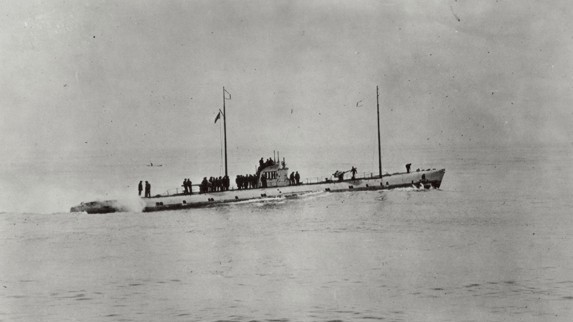
The wreck of a German U-boat given to the U.S. after World War I so its technology could be built into American submarines was found off the coast of Virginia in 2022. SM U-111 took part in the wartime German campaign to sink Allied shipping, but it surrendered after an armistice in 1918. The sub then crossed the Atlantic to the U.S. and was reverse-engineered before it was sunk by U.S. warplanes for target practice in 1921; it was then refloated and towed out to be sunk at its final resting place in August 1922.
30. Scuttled in Scotland
The wrecks from World War I's Imperial German Navy were located and mapped at Scapa Flow in Scotland's Orkney Islands in 2017. The entire German High Seas Fleet surrendered and was interned there after the World War I armistice in November 1918, but the warships were scuttled by their crews in June 1919, a few days before the signing of the Treaty of Versailles, which Germany's commanding admiral feared would give the ships to the British.
Tom Metcalfe is a freelance journalist and regular Live Science contributor who is based in London in the United Kingdom. Tom writes mainly about science, space, archaeology, the Earth and the oceans. He has also written for the BBC, NBC News, National Geographic, Scientific American, Air & Space, and many others.




